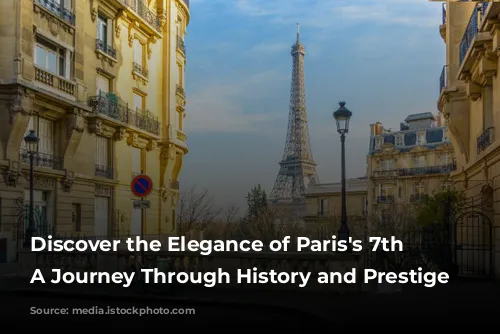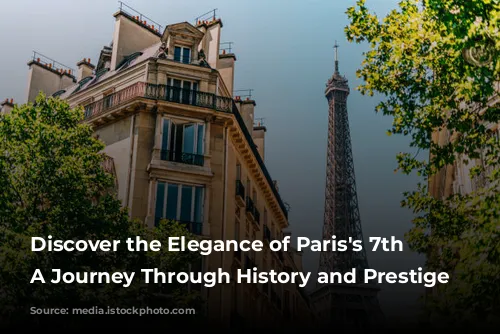Imagine strolling along the Seine River, gazing up at the iconic Eiffel Tower, and experiencing the heart of Parisian elegance. This is the magic of the 7th arrondissement, a district steeped in history and renowned for its prestige. This captivating district, known as “le septième” in French, embodies the soul of Paris, offering a blend of cultural landmarks, historical charm, and modern vibrancy.
A Glimpse into Parisian Grandeur
The 7th arrondissement, named Palais-Bourbon in honor of the seat of the National Assembly, boasts some of Paris’s most recognizable attractions. From the majestic Eiffel Tower to the serene Hôtel des Invalides, Napoleon’s final resting place, this arrondissement is a treasure trove of cultural gems. Its museums, including the Musée d’Orsay, Musée Rodin, and the Musée du Quai Branly – Jacques Chirac, showcase the city’s artistic heritage.
A Historical Tapestry Woven with Aristocracy
Situated on the Rive Gauche, the Left Bank of the Seine, this central district is home to the historic Faubourg Saint-Germain, a neighborhood once reserved for France’s highest nobility. This area has always been synonymous with prestige and elegance, attracting influential figures throughout history. The arrondissement houses significant national institutions like the National Assembly and numerous government ministries. Foreign embassies also grace its streets, occupying grand and historic hôtels particuliers, private mansions reflecting the district’s rich past.
From Royal Residences to National Institutions
The 7th arrondissement’s connection to the French upper class dates back to the 17th century, when France’s nobility moved from the Marais to the Faubourg Saint-Germain, seeking a less congested and more refined environment. The phrase “le Faubourg” itself became a symbol of French aristocracy, reflecting the district’s enduring connection to the nation’s elite. Renowned families erected stunning residences like the Hôtel Matignon, the Hôtel de Salm, and the Hôtel Biron, leaving behind a legacy of architectural grandeur.
Following the French Revolution, many of these magnificent mansions were transformed into national institutions, symbolizing a shift in power and the Republic’s embrace of the district’s grandeur. The expression “les ors de la Republique,” signifying the luxurious environment of national palaces, originated during this era.
A District Reshaped by Time and Influence
During the Restauration period, the Faubourg regained its prestigious status as the heart of Parisian high society. The district became the political center of France, housing the Ultra Party, a conservative political force. Although the district lost its political dominance after the Fall of Charles X, it remained the social hub of the French elite.
The 19th century saw the arrondissement host five Universal Exhibitions, landmark events that dramatically altered its cityscape. The Eiffel Tower and the Orsay building, both iconic symbols of Paris, were constructed for these exhibitions.
A Modern Metropolis with a Historical Soul
The 7th arrondissement spans 4.088 square kilometers, a testament to its significant presence within the city. While its population peaked in 1926, the district has never reached the same density as other arrondissements due to its concentration of government bodies.
Beyond its historical significance, the 7th arrondissement is home to prestigious institutions and renowned businesses. Air Liquide, Alcatel-Lucent, and Valode & Pistre, leading names in their respective fields, have established their headquarters within this district. The American University of Paris and Istituto Statale Italiano Leonardo Da Vinci, an Italian international school, also call this area home.
A Blend of Tradition and Modernity
Politically, the 7th arrondissement leans towards the right, reflecting the district’s historical association with conservative values. The arrondissement played a pivotal role in the 2017 French presidential election, exhibiting a strong preference for right-wing candidate François Fillon in the first round. In the final round, however, the district overwhelmingly supported Emmanuel Macron, demonstrating a nuanced political landscape.
The 7th arrondissement remains a vibrant and dynamic district, balancing its historical legacy with a modern outlook. This unique blend of tradition and modernity, along with its unparalleled cultural and historical significance, makes the 7th arrondissement a captivating destination for visitors and residents alike. From its elegant streets to its iconic landmarks, the 7th arrondissement offers a glimpse into the soul of Paris, a city that effortlessly blends history, prestige, and modern energy.






